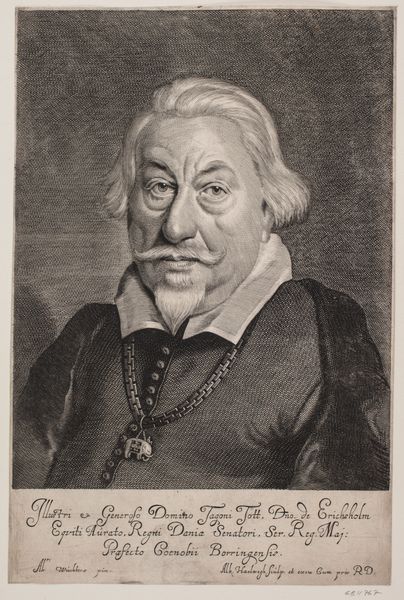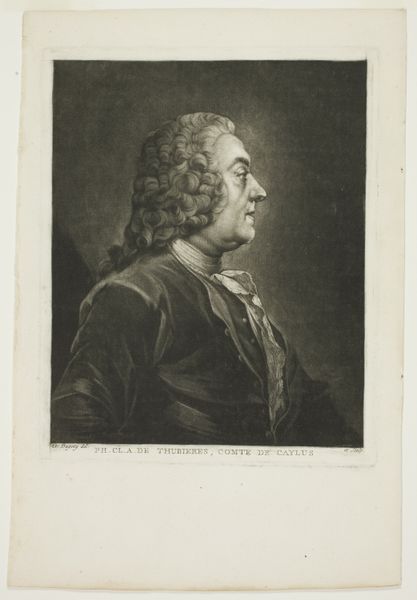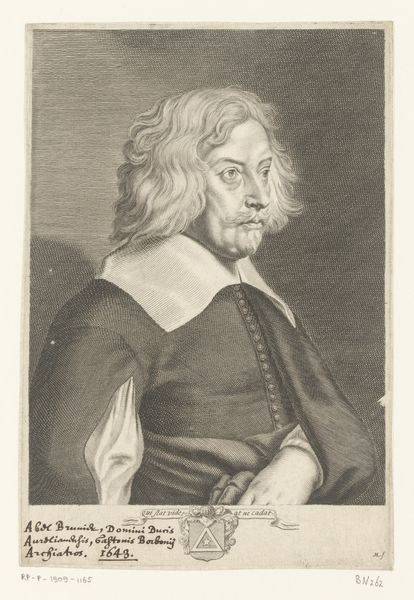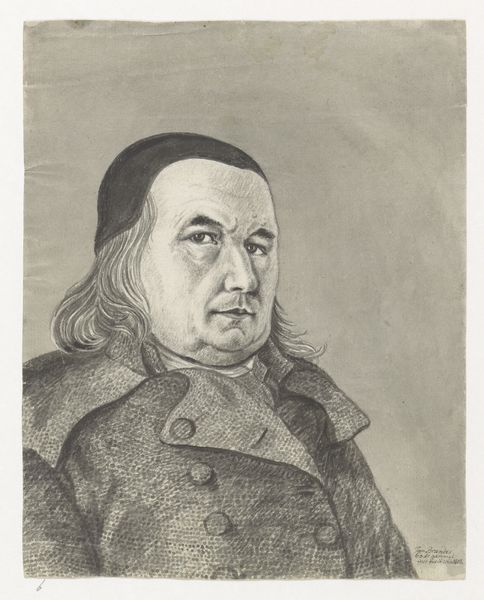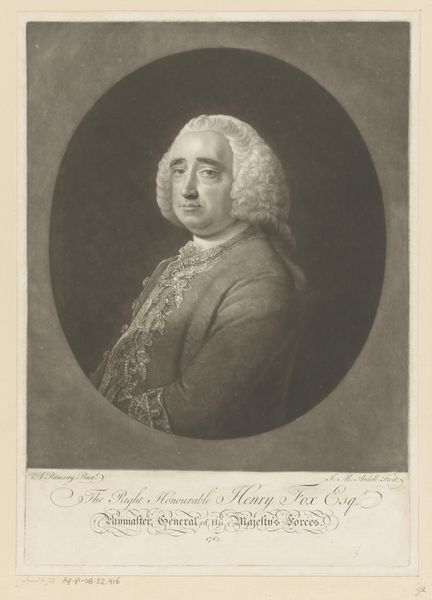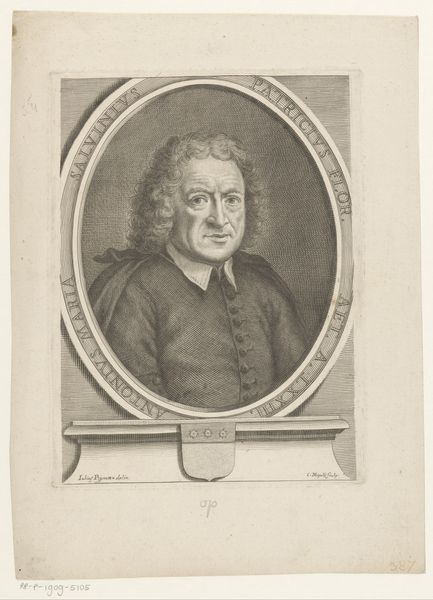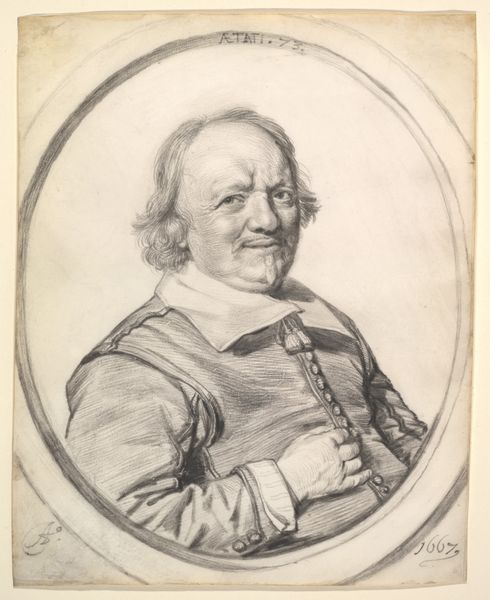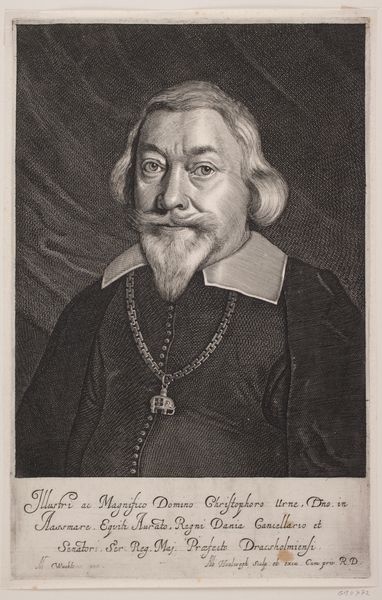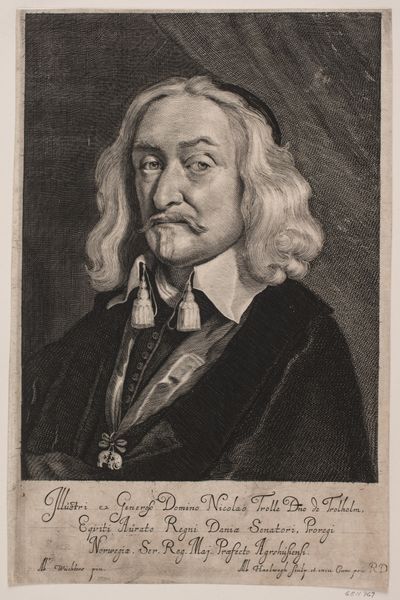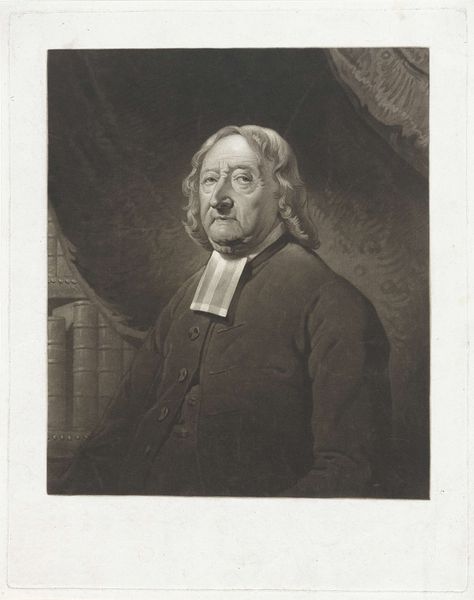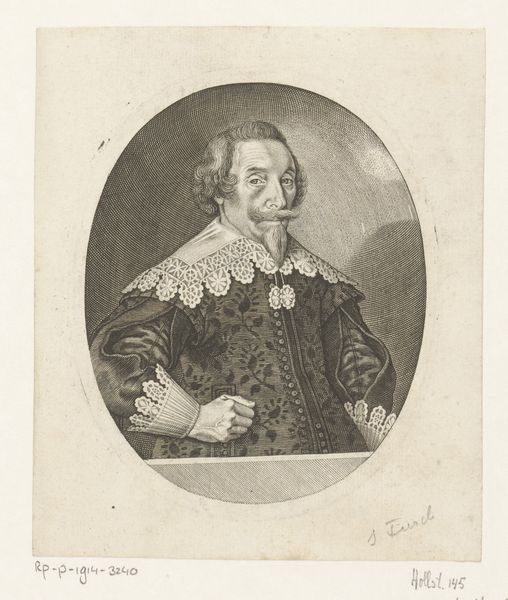
print, engraving
#
portrait
#
baroque
# print
#
engraving
Dimensions: 320 mm (height) x 215 mm (width) (plademaal)
This portrait of Tage Thott was made by Albert Haelwegh, using engraving, sometime in the 17th century. The process begins with a metal plate, usually copper, into which the image is cut. The engraver uses a tool called a burin to incise lines directly into the plate. The burin is pushed through the metal, creating clean, precise lines. The depth and thickness of these lines determine how much ink they hold, thus controlling the tonal range of the print. The engraved plate is then inked, and the surface wiped clean, leaving ink only in the incised lines. Finally, the plate is pressed onto a sheet of paper, transferring the ink and creating the print. The sharp detail achievable through engraving lends itself well to portraiture and the depiction of fine textures, like Thott's elaborate chain. The resulting image is not just a likeness, but also an index of the engraver’s skill, and the sitter’s social standing. Appreciating the craft of engraving helps us see these prints not just as images, but as products of skilled labor, embedded in a specific historical and economic context.
Comments
No comments
Be the first to comment and join the conversation on the ultimate creative platform.
